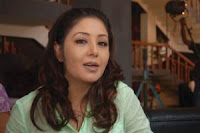
facebook pho

Etiam tincidunt lobortis massa et tincidunt. Vivamus commodo feugiat turpis, in pulvinar felis elementum vel. Vivamus mollis tempus odio, ac imperdiet enim adipiscing non. Nunc Read More ...

Proin ac leo eget nibh interdum egestas? Aliquam vel dolor vitae dui tempor sollicitudin! Integer sollicitudin, justo non posuere condimentum, mauris libero imperdiet urna, a Read More ...

Etiam ultrices felis sed ante tincidunt pharetra. Morbi sit amet orci at lorem tincidunt viverra. Donec varius posuere leo et iaculis. Pellentesque ultricies, ante at Read More ...
Preceding film in origin by thousands of years, early plays and dances had elements common to film: scripts, sets, costumes, production, direction, actors, audiences, storyboards, and scores. Much terminology later used in film theory and criticism apply, such as mise en scene (roughly, the entire visual picture at any one time). Owing to an absence of technology for doing
FOR COMPLETE INFORMATION CLICK HERE A film, also called a movie or motion picture, is a series of still or moving images. It is produced by recording photographic images with cameras, or by creating images using animation techniques or visual effects. The process of filmmaking has developed into an art form and industry.Films are cultural artifacts created by specific cultures,
song : Ghar Bhanda Pyaro NTC - 0170007716, NCELL - 6037861, UTL - 7243849LIFESTYLEA Presentation of Cinema SansarA Film by Mr. Vijay RajProduced by Mr.Lal chand Prasadmusic/Arrange : Rajendra Kibachhansong : Dinesh SubediVocal: bishwosanta Rai/Bimala ThapaMixing : Bishan ManandharRecording Studio : Harmonic Digital Studioshooting Studio : KB FilmsCamera : Sagar GautamProduction

GORKHALISuper Hit Action Nepali Movie Gorkhali.Starring: Shree Krishna Shrestha, Jharana Thapa, Gauri Malla, Narayan Tripathi etc… Sunil Kumar Thapa Presents Nepali film :Gorkhali Cast: Shree Krishna Shrestha, Jharana Thapa, Gauri Malla, Narayan Tripathi etc. Story :Shiva Regmi Direction :Gyanendra Deuja

A friend in need is friend indeed. Saathi, starring Rajesh Hamal and Karishma in lead roles justifies the above saying. With some of the melodious songs and out and out comedy scenes, Saathi is one fine joy ride Nepali commercial cinema. The movie also stars Nir Shah, Gauri Malla, Basundhara Bhushal, Mithila Sharma, Narayan Tripathi, Mohan Mishra in supporting roles. Apart

For a change, a Nepali film’s premiere at the QFX Cinema Hall had a different line of audiences.A majority of people who turned up for the premiere of the much talked flick Batch No 16 were not those who are often spotted at turnstiles.Directed by Pitamber Pandey and produced by Bikrant Shrestha and Surendra Poudel, the flick had drawn an unbelievably huge turn out.Any little

If you ask Shree Krishna Shrestha his age then he would promptly say he is 23 even after spending his precious 23 years in the Nepalese film industry.This actor, who was back some months back with his home product Kahan Bhetiyela, is currently enjoying its success. Fifty-one days, seventy days and now, the film is going to celebrate hundred days in many cinemas in and out





a complete media house









